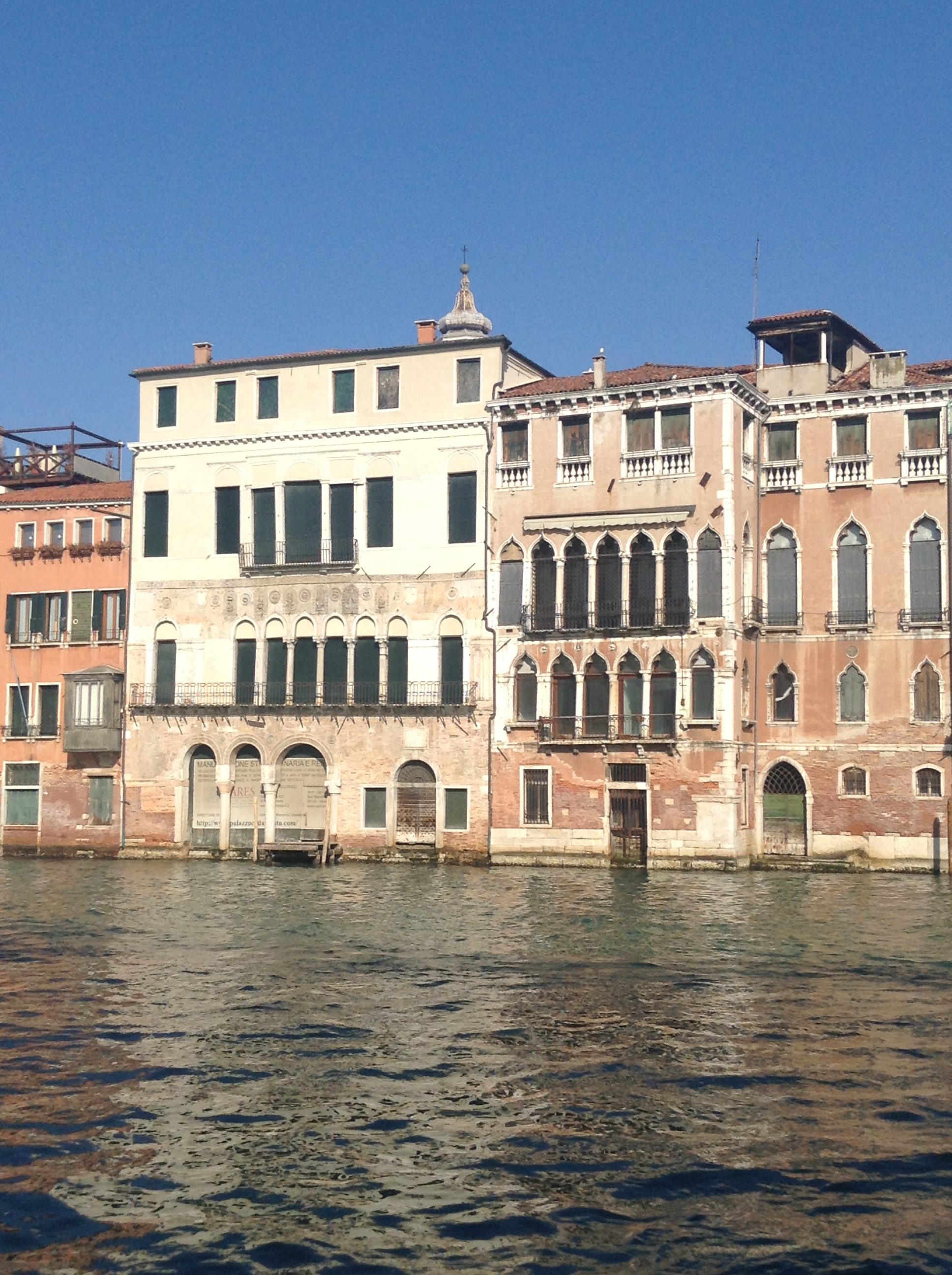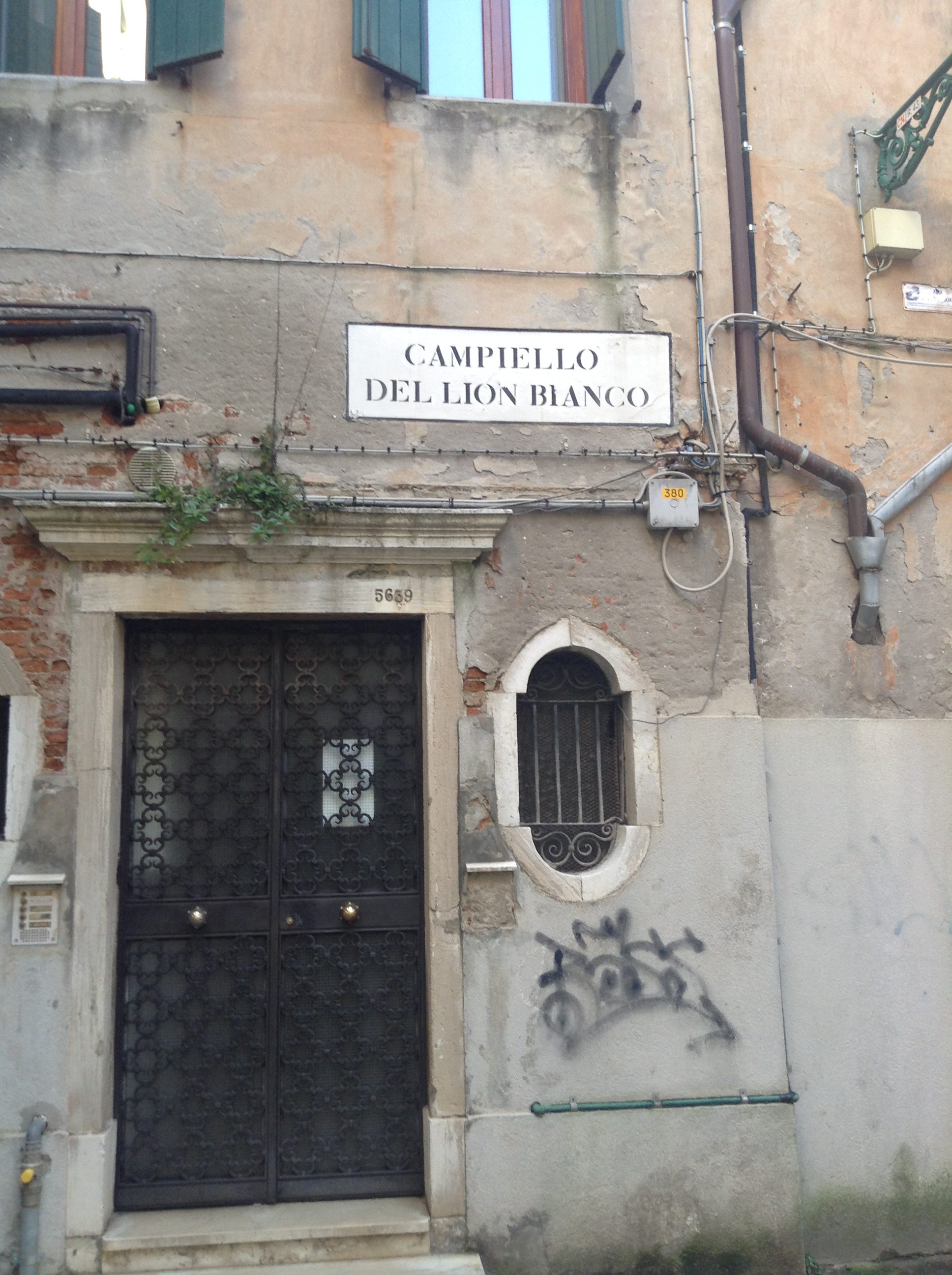 Ca’ da Mosto is where the Albergo del Leon Bianco was situated in the 18th century, and where Mr Boscombe and Mr Shackleford stay at the beginning of Ascension. It was one of the best-known hotels in the city and we have a description of its comforts by Thomas Beckford in his account of his own Grand Tour in 1780:
Ca’ da Mosto is where the Albergo del Leon Bianco was situated in the 18th century, and where Mr Boscombe and Mr Shackleford stay at the beginning of Ascension. It was one of the best-known hotels in the city and we have a description of its comforts by Thomas Beckford in his account of his own Grand Tour in 1780:
“The rooms of our hotel are as spacious and cheerful, as I could desire; a lofty hall, or rather gallery, painted with grotesque, in a very good style, perfectly clean, floored with a marble stucco, divides the house, and admits a refreshing current of air. Several windows near the ceiling, look into this vast apartment, which serves in lieu of a court, and is rendered perfectly luminous by a glazed arcade, thrown open to catch the breezes.”

The palace is one of the oldest on the Grand Canal, parts of it, according to John Julius Norwich, dating back even to the eleventh century. It’s in the Veneto-Byzantine style – or at least the two bottom storeys are, two extra storeys having been added in later centuries in a completely different style (not unusual in Venice).
As the name suggests, the palace originally belonged to the Da Mosto family, one of the oldest families in the lagoon. The best-known scion of this family, Francesco Da Mosto, visited the old family home in an episode of the BBC television series, Francesco’s Venice. At the time the building was in a state of total abandonment; it was not exactly a personal nostalgia trip for Francesco Da Mosto, since the family had sold the palace at the beginning of the 17th century; nonetheless he said that it was the palace he would most like to see restored. Restoration is in fact now under way; the Grand Canal façade, as can be seen here, is now splendid, while the back-entrance, looking onto a rather dismal courtyard, is still clad in scaffolding.
If, like so many other restored buildings, it is then turned into a hotel, that will only be suitable in this case, since from 1661 until the end of the 18th century it was Venice’s best-known inn. The courtyard on the land-entrance side of the building still bears the name “Leon Bianco” (or “Lion Bianco”, in Venetian dialect). Perhaps the most distinguished visitors were the so-called Counts of the North, who came to Venice in 1782: the exotically named couple were actually the son of Catherine the Great, Paul Petrovich, the future Czar Paul I, and his wife, Maria Feodorovna. It provided the occasion for one of Venice’s grandest ever parties for foreign visitors – the last of its kind, as well.

My friends and I used to refer to this as “the dumpy palazzo” and we, too, always hoped it would be restored.
“Dumpy” with reference to its shape or because people dumped things there?
Since our first visit to this beautiful city in February 1997, this until recently has been one of the saddest sights on the Grande Canale. Thankfully in the last 10 years we have watched this very first Palazzo on the Grande Canale being slowly brought back to life. We always take yearly photo’s from the Fish Market every year to marks its progress. Yes the rear which can be found down a small dark passage, looks very untouched and unloved.
Thanks for this. It would be interesting to see the pictures in sequence. And it is good to know that some things improve in Venice. Quite a number of things, in fact…
I’m very happy to see this ancient building finally being restored. Hopefully, the interior will not be turned into a white box, Eurotrash hotel. I was excited to see Palazzo Priuli Ruzzini restored, until I saw the interior. It looks like it was designed by Ikea. PLEASE, if this building is to be transformed into a hotel, let it be true to the period. The Hotel Danieli has some beautiful classic rooms.
Yes, it would be very sad if the palace’s history were not respected. We can just hope for sensitivity on the part of the owners…